THE MYSTERIOUS MONOLITHS OF AFRICA
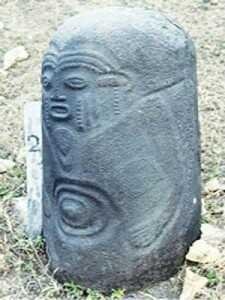
The Ikom Monoliths are a group of stone sculptures found in small area around Ikom in Cross River State of Nigeria, inhabited by Ekoi people who live in scattered villages. The stone monoliths are known variously as Akwanshi or Atal or Alaptal.
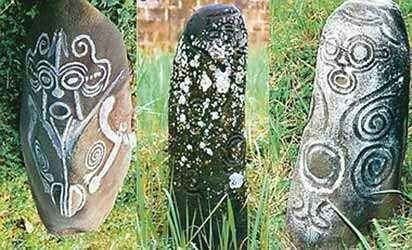
They are carved monoliths which occur in groups numbering about 350 stones located about 35 sites which are evenly distributed within seven main clans of Cross River State namely; Abanyom; Akaju ; Akpanobong ; Nde ; Nnam in the Ejagham tribe; Nselle, and Nta.
Each stone figure is between 2ft and 4ft high and the largest being 6ft. They are conical in shape. These monoliths are found in circles and /or concentric formations, showing perhaps where some activities in the past took place. To some people, Akwanshi literally means dead person in the ground.
Clans and different names of stones
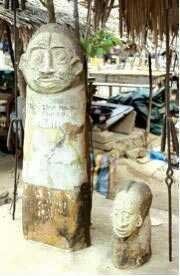
Among the Abanyon group, the term is refered to as “Stones” (Atal) while in Akaju, the people refer it to as “Long Stones” (Alaptal). Akwanshi is said to refer to a collection of stones or monoliths either owned by the entire clan, village or the family.
Each monolith and stone represents an ancestor. According to oral history, it is the ancestors of Ekoi people that put the stones where they are. Their ancestors are believed to have gotten the stones out of the river where the water made them smooth as they are but their ancestors only cut the faces with stones and irons, each face representing one of their dead chiefs whose names are not known.
Thus, their ancestors made human sacrifices to them. Among the Ekoi people who live in scattered villages, there is the sole spiritual head or Chief priest called Ntoon. Thus when the Ntoon dies he is represented in carved basalt monoliths (Akwanshi).
Like the Esie soapstone images, the Akwanshi have baffled experts since their first discovery in 1903. Their origin remains a mystery, their date of execution and their purpose. It is believed among the Ekoi people that the spirit of the dead returns to live in the stones.
A source of oral tradition reiterated that Akwanshi were carved between 16th and 20th Century AD.
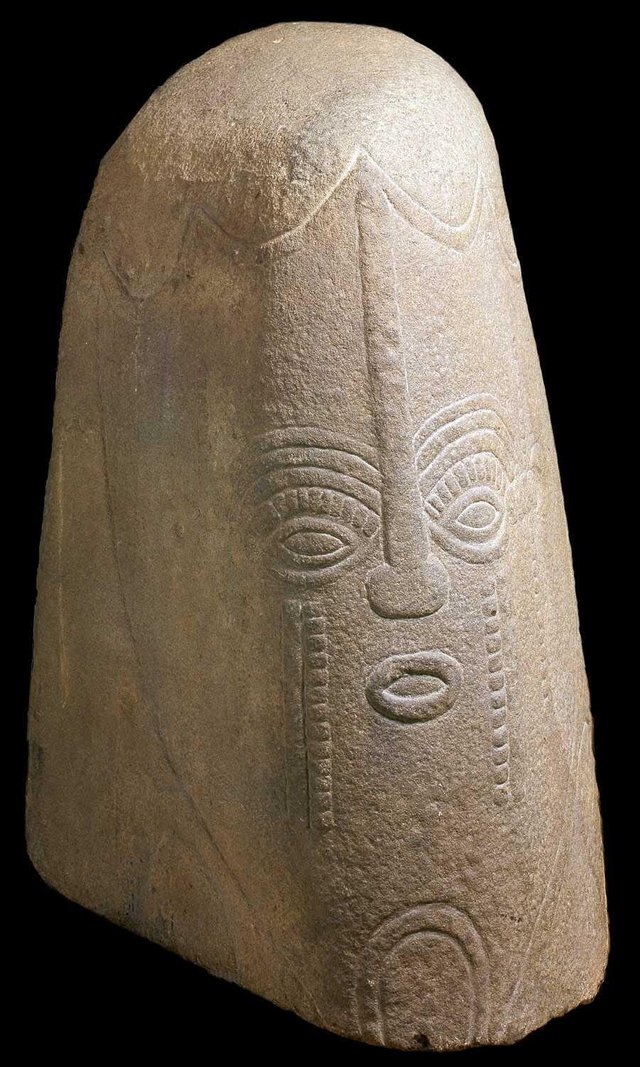
All Akwanshi have eyes,nose, mouth, beard and navel portrayed as well as ears, hands, arms, breasts and geometric decorations (some of which represent tribal marks). Though the carving ends at the navel, but the beard is an indication that they are all male.
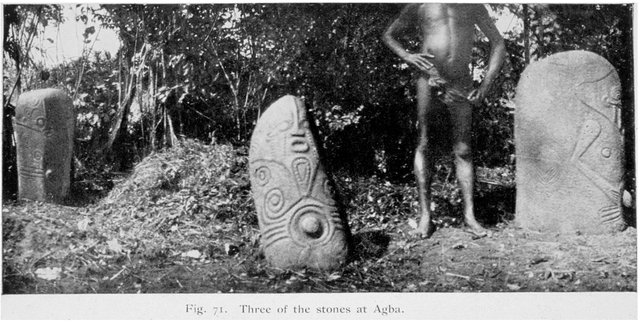
There are several sites of monoliths or Akwanshi located in Ikom area of Cross River State. Among the main sites are the following:
(1) Abayong (9)Egunonkwo (17) Natanebim (25) Odoratam
(2) Agba (10) Ekulogom (18) Nebrokp (26) Old Edor
(3) Akumabal (11) Emangabe (19) Njemitop (27) Old Ekpatana
(4) Alok (12) Era (20) Nkum Akpambe (28) Old Nkrigom
(5) Anaghe (13) Esam Abuntak (21) Nnang (29) Old Nkrigor
(6) Eganga (14) Etinta (22) Nsak(30) Old Nto
(7) Edamkono (15) Manden (23) Ntelakor(31) Owom
(8 Eganga(16) Mbianang (24) Ntolshi (32) Oyengi
Akwanshi occupies an important place in the history of Ekoi people of Ikom community. It is believed among the people that the face of each Akwanshi represents one of their ancestors who they do not know his name. Their forebears revered these stones and made human sacrifices to them. During some important annual festivals, these stones are usually decorated with chalk and palm leaves.
Some Akwanshi, especially those of the Etinta have the neck groove shallower while arms, hands and surface decorations are added. Some also look unusual in lacking a sculptured navel, while other Etinta Akwanshi have massive head.
They have faces which bear the diagonal cheek marks. At Nkrigor (Nselle), there are Akwanshi that have open mouth, wedge – shaped beard and protruding navel as well as facial marks. In some deserted areas like the old village of Nkirgom, the Akwanshi have fallen and are not re – erected
These things might be wiered but there are worth study.
Tales from my travels.